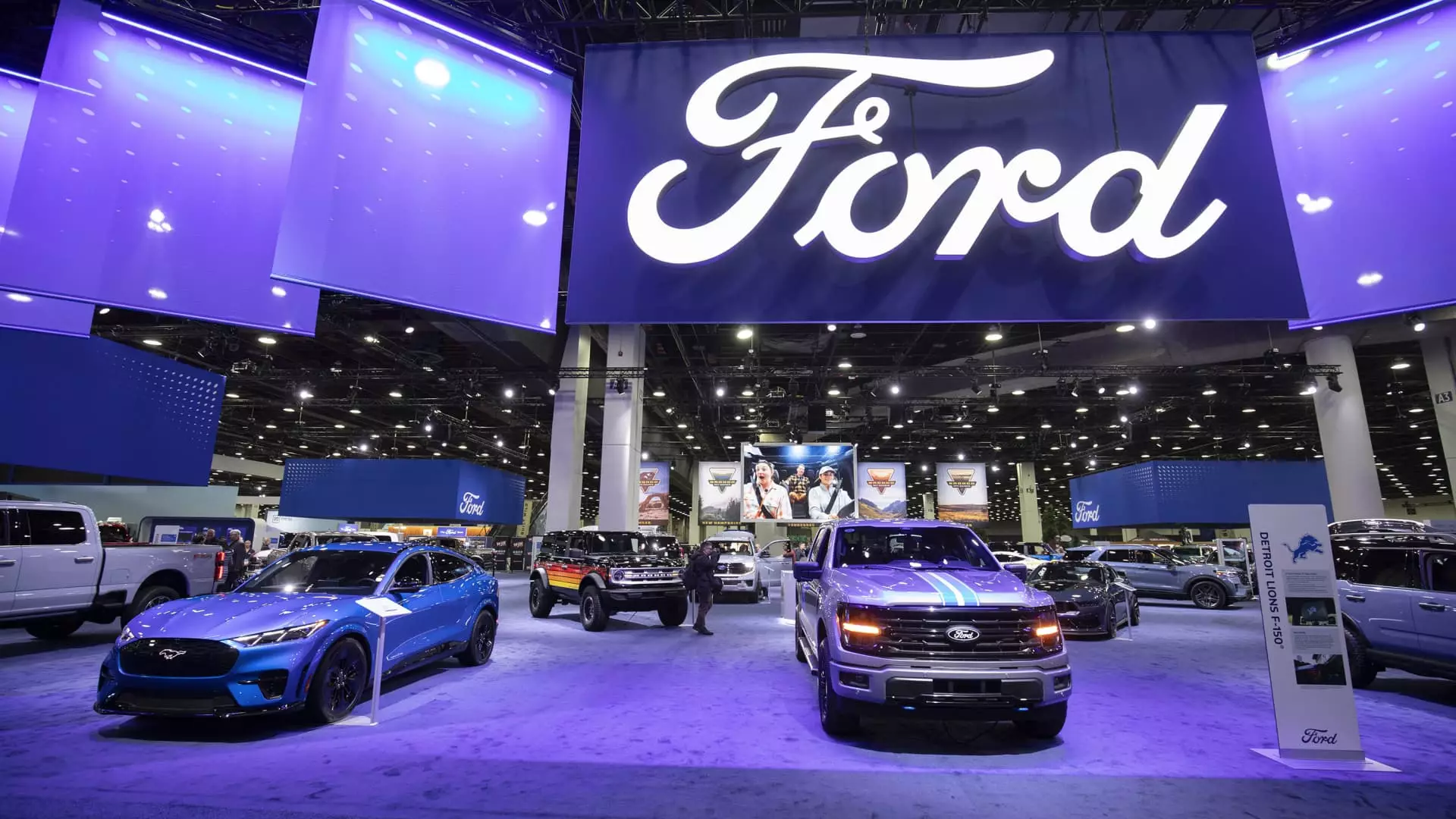Ford Motor Company, a cornerstone of the American automotive industry, recently reported a better-than-expected performance for the fourth quarter. However, the forecast for 2025 casts a shadow over its achievements, revealing potential challenges that could affect the company in the coming years. CEO Jim Farley’s commitment to enhancing vehicle quality and cutting costs reflects the urgent need for a strategic overhaul in a competitive and evolving market.
In the recently released financial results, Ford’s fourth-quarter earnings surpassed Wall Street’s estimates, revealing an adjusted earnings per share (EPS) of 39 cents compared to the anticipated 33 cents. The automotive giant also reported a significant increase in total revenue, achieving an unprecedented $185 billion for the year. Automotive revenue alone reached $44.9 billion, again beating expectations of $43.02 billion. Companies often celebrate such achievements, but the growth masks an underlying volatility and critical issues that lie ahead.
While the record-setting revenue is commendable, it must also be viewed within the context of the automotive market, which poses several challenges. Ford’s forward-looking guidance indicates a projected adjusted EBIT of $7 billion to $8.5 billion for the current year, signaling lower earnings than many had hoped for. Moreover, capital expenditures are expected to hover between $8 billion to $9 billion, indicating substantial investment is still necessary for research, development, and production processes.
CEO Jim Farley and newly appointed CFO Sherry House have acknowledged the anticipated headwinds in the industry. Factors such as a predicted industry price decrease of 2% and declining sales threaten to hinder Ford’s growth trajectory in 2025. In a recent statement, House noted that the company would not make immediate changes regarding tariffs that could affect imports from Mexico and Canada, suggesting a cautious approach to these external factors. As they aim to mitigate uncertainties, they must capitalize on internal strengths.
One of Ford’s significant strategic objectives is to cut material and warranty costs by $1 billion compared to the previous year. Last year, the company faced scrutiny over warranty and recall issues that negatively impacted profitability. This focus on reducing costs is vital, as it might restore investor confidence following a nearly 20% decline in shares in 2024.
Market Competition: Keeping Pace with Rivals
Ford is facing increasing pressure not only from within but also from fierce competitors, particularly General Motors (GM). GM outperformed Wall Street expectations in the fourth quarter and delivered a bullish 2025 forecast. This differential performance puts Ford in a precarious position, as stakeholders look for sustained growth and innovation. The market dynamics have shifted sharply toward electric and hybrid vehicles, and legacy automakers are scrambling to keep pace. Ford must not only innovate but also ensure quality to regain any lost trust and market share.
Farley expressed optimism about the company’s potential in the coming years, drawing parallels to pivotal moments in 2007 and 2008 when Ford navigated economic turbulence by empowering itself. These reflections suggest a belief in intrinsic potential; however, optimism must be tethered to pragmatic strategies that address current shortcomings and competition.
While Ford’s recent financial results highlight a company that has managed to meet and exceed expectations for the fourth quarter, the outlook for 2025 is laden with challenges that cannot be ignored. From cost reductions to quality improvements and strategizing around market volatility, Ford has much work ahead. Successful navigation of these issues will determine whether the company can secure its place as a leader in the automotive industry or if it will continue to flirt with instability. Investors and stakeholders should remain vigilant, as the road ahead may be fraught with hurdles that require astute management and visionary leadership. Ford may have the will to challenge itself, but how it translates that will into practical action will be the true test.

